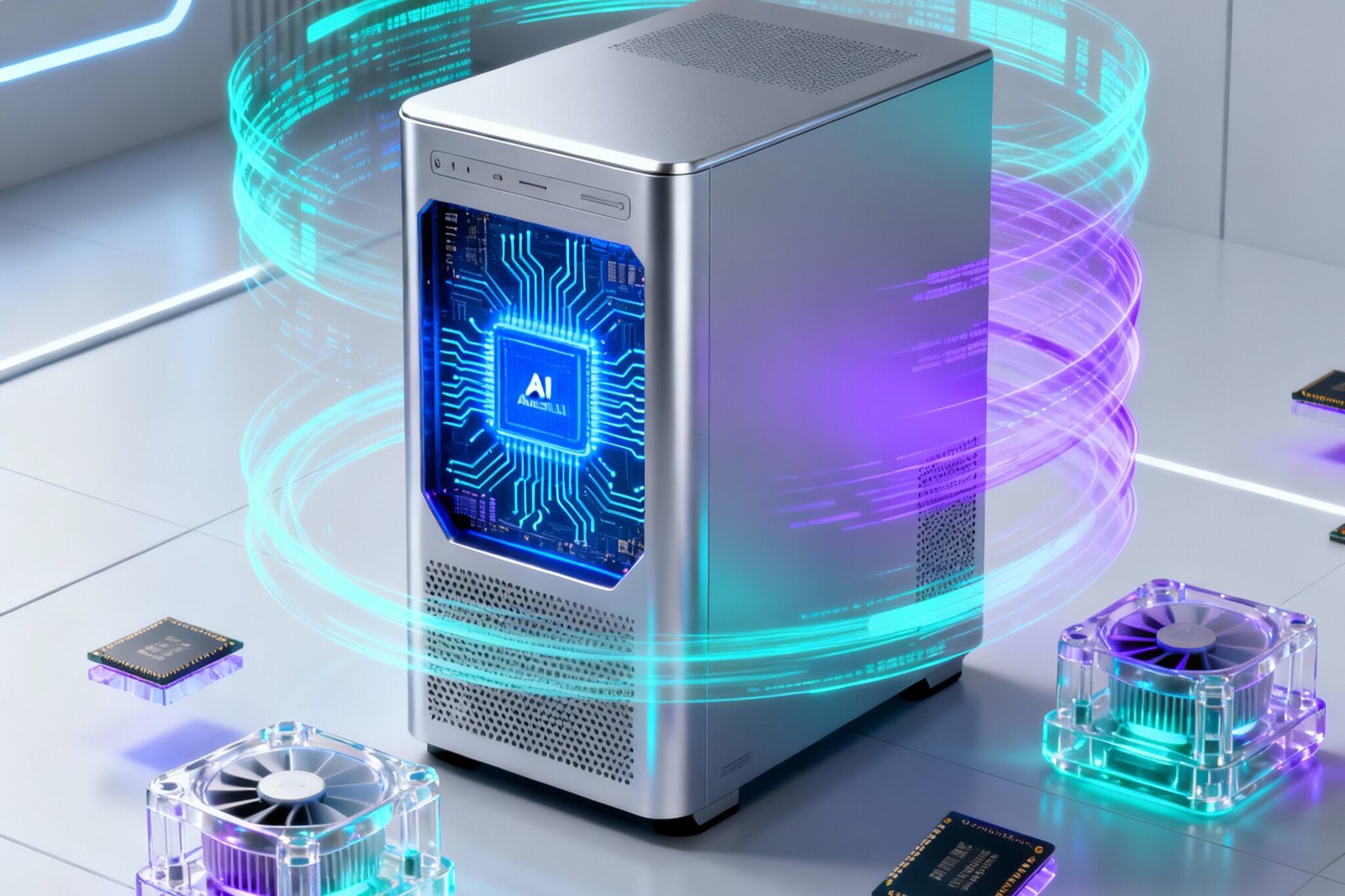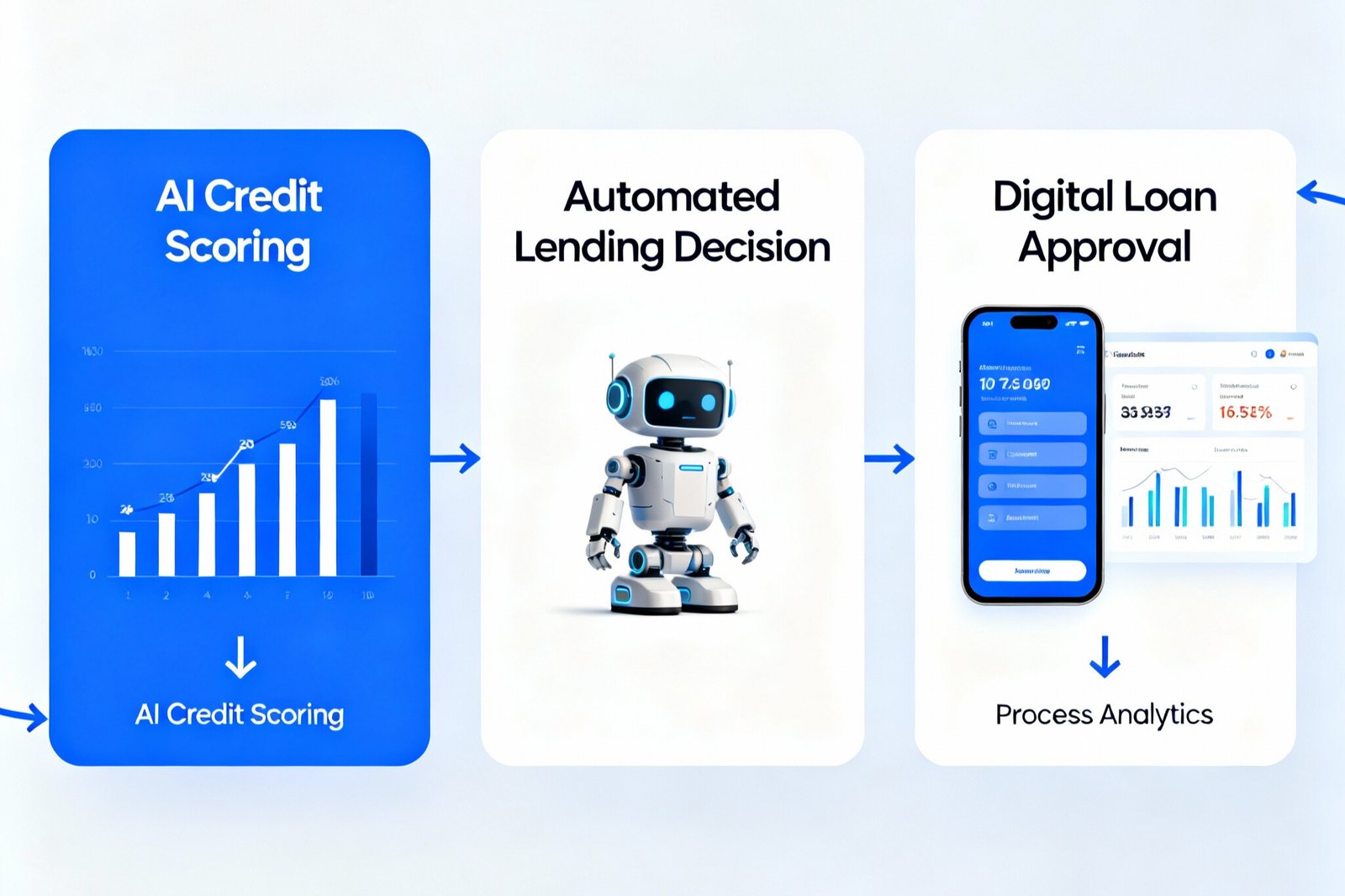Imagine having a personal assistant that never sleeps, never forgets, and can handle dozens of tasks simultaneously right from your desktop computer. Smart desktop AI has transformed from a futuristic concept into an essential productivity tool that’s reshaping how we work, create, and interact with our computers in 2025.
The artificial intelligence revolution isn’t just happening in the cloud or on mobile devices—it’s taking over our desktops with unprecedented capabilities. From automating repetitive tasks to providing intelligent recommendations, smart desktop AI systems are becoming the backbone of modern digital workflows.
What is Smart Desktop AI?
Smart desktop AI refers to artificial intelligence-powered software applications and systems that operate directly on desktop computers to enhance productivity, automate tasks, and provide intelligent assistance. Unlike cloud-based AI services, these desktop solutions process data locally, offering faster response times, enhanced privacy, and reduced dependency on internet connectivity.
These AI systems leverage machine learning algorithms, natural language processing, and neural networks to understand user behavior, predict needs, and execute complex tasks with minimal human intervention. The technology has evolved from simple automation scripts to sophisticated AI agents capable of learning and adapting to individual work patterns.
The Explosive Growth of Smart Desktop AI Market
The numbers tell a compelling story about the rapid adoption of smart desktop AI technology. The global AI PC market is projected to grow from $91.23 billion in 2025 to $260.43 billion by 2031, representing a remarkable compound annual growth rate (CAGR) of 19.1%. This explosive growth reflects the increasing demand for intelligent, responsive computing experiences that traditional PCs simply cannot deliver.
Desktop and notebook computers currently dominate this market, accounting for 54.4% of global revenue in 2024. The desktop segment leads due to enhanced performance capabilities, extensive upgradability options, and significant adoption for enterprise, creative, and technical applications. Unlike laptops, desktop systems can accommodate high-performance hardware components such as advanced CPUs, GPUs, and dedicated neural processing units (NPUs) essential for running complex AI models.
The broader AI market context is equally impressive, with the global AI market valued at approximately $391 billion and projected to increase by around 5 times over the next 5 years. The AI industry is expanding at a CAGR of 35.9%, with as many as 97 million people expected to work in the AI space by 2025.
Key Features and Capabilities of Smart Desktop AI
Intelligent Task Automation
Modern smart desktop AI systems excel at automating repetitive and time-consuming tasks. These systems can handle automated report generation, data analysis, email sorting, and calendar management without human intervention. The AI learns from user behavior patterns and can anticipate needs while providing personalized recommendations based on historical data.
For example, an AI assistant might automatically categorize incoming emails, schedule meetings based on calendar availability, and generate weekly productivity reports—all while learning to improve accuracy over time.
Natural Language Processing and Voice Recognition
Smart desktop AI applications typically offer voice recognition and interaction capabilities, allowing hands-free operation through natural language processing. Users can dictate documents, control applications, and execute complex commands using conversational language rather than memorizing specific syntax or shortcuts.
This feature has become particularly valuable for professionals who need to maintain focus on creative or analytical tasks while simultaneously managing routine computer operations.
Personalized User Experience
AI desktop systems provide personalized assistance that adapts to individual user preferences and work styles. The technology analyzes usage patterns, frequently accessed files, preferred workflows, and productivity peaks to optimize the computing experience for each user.
This personalization extends to smart recommendations for apps, files, and even break times based on productivity analysis.
Enhanced Security and Privacy
One significant advantage of smart desktop AI is enhanced data privacy and security. Since processing occurs locally rather than in the cloud, sensitive information remains on the user’s device, reducing exposure to potential data breaches or unauthorized access. This local processing capability has made desktop AI particularly attractive to enterprises handling confidential information.
Real-World Applications and Examples
Business and Enterprise Solutions
Major technology companies are leading the smart desktop AI revolution with practical implementations. Microsoft has incorporated intelligent capabilities into all its products and services, including Cortana, Skype, Bing, and Office 365, positioning itself as one of the world’s biggest AI as a Service (AIaaS) vendors.
Google’s commitment to AI is evident through acquisitions like DeepMind and innovations such as Google Duplex, which uses natural language processing to make phone calls and schedule appointments automatically. Their AI systems can learn to play complex games and beat professional players, demonstrating the sophisticated reasoning capabilities being integrated into desktop applications.
Creative and Content Creation
Smart desktop AI has revolutionized creative workflows through intelligent assistance in content generation, design, and multimedia production. AI-powered writing assistants like Grammarly, workflow automation tools like Zapier, and smart note-taking apps like Notion have become essential tools for content creators.
These applications use machine learning to suggest improvements, automate formatting, and even generate content ideas based on user preferences and industry trends.
Data Analysis and Business Intelligence
Desktop AI systems excel at processing large datasets and generating actionable insights. Companies use AI to predict what customers might want to buy, with platforms like Alibaba using natural language processing to automatically generate product descriptions. Similarly, Netflix makes $1 billion annually from automated personalized recommendations, demonstrating the revenue potential of smart AI implementation.
Benefits of Smart Desktop AI Implementation
Significant Time Savings
The primary benefit of smart desktop AI is significant time savings through automation of repetitive tasks. Studies show that 48% of businesses use some form of AI to utilize big data effectively, indicating widespread recognition of AI’s efficiency benefits.
Users report saving several hours per week by delegating routine tasks to AI assistants, allowing them to focus on high-value creative and strategic work.
Improved Productivity and Decision-Making
Smart desktop AI enhances productivity through intelligent scheduling that prioritizes tasks based on deadlines and available resources. The technology provides data-driven insights for improved decision-making, helping users identify patterns and opportunities they might otherwise miss.
Better Organization and Task Management
AI systems provide better organization by centralizing task management and automatically categorizing information based on context and priority. This organizational capability extends to file management, email organization, and project coordination.
Cost-Effectiveness for Businesses
83% of companies claim that AI is a top priority in their business plans, reflecting the technology’s potential for cost reduction and efficiency improvements. The AI market is set to contribute $15.7 trillion in revenue by 2030, boosting local economies by an additional 26%.
Popular Smart Desktop AI Platforms and Tools
Specialized Desktop AI Solutions
Simular Desktop offers personal AI that can use computers like a human, providing comprehensive automation capabilities for complex workflows. This platform represents the cutting edge of desktop AI technology, capable of learning and replicating human computer interactions.
Braina positions itself as Artificial General Intelligence (AGI) software for PC, offering voice recognition, task automation, and intelligent assistance capabilities. The platform focuses on creating a comprehensive AI companion for desktop users.
Automation and Workflow Platforms
Ui.Vision RPA provides cross-platform desktop automation capabilities, enabling users to create sophisticated automation workflows without extensive programming knowledge. The platform supports both simple task automation and complex business process automation.
N8n serves as an AI workflow automation platform specifically designed for technical teams, offering extensive integration capabilities and customizable automation workflows.
Enterprise AI Solutions
TestComplete by SmartBear provides desktop, web, and mobile test automation capabilities, demonstrating how AI is transforming software development and quality assurance processes. This platform shows how AI can enhance technical workflows and reduce manual testing overhead.
Hardware Requirements and Technical Considerations
Neural Processing Units (NPUs)
Modern smart desktop AI applications require specialized hardware components, particularly Neural Processing Units (NPUs) and optimized processors that offer faster processing, enhanced privacy, and reduced reliance on cloud computing. These dedicated AI chips are becoming standard in next-generation desktop computers.
Performance and Compatibility
AI-powered PCs are designed for processing, mining, and performing real-time data analysis, making them especially valuable in data-intensive sectors like finance, healthcare, and retail. Desktop systems have advantages over laptops because they face no thermal or battery constraints, allowing them to handle demanding AI workloads continuously without throttling.
Operating System Integration
Windows accounts for a significant share of the AI PC market due to its widespread enterprise adoption and AI integration capabilities. The integration of artificial intelligence into operating systems, particularly Windows, has significantly transformed the computing landscape.
Challenges and Limitations
Rapid Technology Evolution
One of the key challenges facing the smart desktop AI market is rapid technology evolution and upgrade cycles. Users and businesses must constantly evaluate whether their current systems can support the latest AI capabilities or if hardware upgrades are necessary.
Learning Curve and User Adoption
While AI systems are designed to be user-friendly, there’s still a learning curve associated with maximizing their potential. Users need time to understand how to effectively communicate with AI assistants and configure them for optimal performance.
Cost and Implementation Complexity
Enterprise implementation of smart desktop AI can involve significant initial costs and technical complexity. Organizations must consider hardware upgrades, software licensing, training, and ongoing maintenance when budgeting for AI adoption.
Future Outlook and Trends
Market Projections and Growth
The future of smart desktop AI looks exceptionally promising. 92% of executives say they expect to boost spending on AI in the next three years, with 55% expecting significant investments in AI infrastructure. This executive commitment suggests sustained growth and innovation in the desktop AI space.
Emerging Technologies and Integration
The convergence of AI with other emerging technologies promises even more sophisticated desktop experiences. Forecasts indicate a symbiosis of AI, cloud computing, and emerging tech like Web3 and the Metaverse. This integration will likely create new categories of smart desktop applications that we can barely imagine today.
Democratization of AI Tools
In 2025, 70% of new applications are being developed using low-code/no-code platforms, representing a massive leap from less than 25% in 2020. This trend suggests that smart desktop AI tools will become increasingly accessible to non-technical users.
Conclusion
Smart desktop AI represents a fundamental shift in how we interact with computers, transforming passive machines into intelligent partners that understand, learn, and anticipate our needs. With market projections showing explosive growth from $91.23 billion in 2025 to $260.43 billion by 2031, this technology is not just a trend—it’s the future of personal computing.
The benefits are clear: significant time savings, improved productivity, better organization, and enhanced decision-making capabilities. As 97 million people are expected to work in the AI space by 2025, smart desktop AI will become an essential skill for professionals across industries.
Whether you’re a business professional looking to automate routine tasks, a creative seeking intelligent assistance, or an enterprise planning digital transformation, smart desktop AI offers unprecedented opportunities to enhance productivity and unlock new possibilities in the digital workplace. The revolution is already underway—the question isn’t whether to adopt this technology, but how quickly you can integrate it into your daily workflow.
FAQs
Q1: What exactly is smart desktop AI, and how does it differ from cloud-based AI?
A: Smart desktop AI refers to artificial intelligence software that runs directly on your computer, processing data locally rather than sending it to remote servers. This provides faster response times, enhanced privacy, and works even without internet connectivity, unlike cloud-based AI services that require constant internet access.
Q2: Do I need special hardware to run smart desktop AI applications?
A: Modern AI applications work best with specialized hardware like Neural Processing Units (NPUs) and optimized processors, though many can run on standard computers with reduced performance. Desktop computers generally handle AI workloads better than laptops due to superior cooling and power capabilities.
Q3: How much can smart desktop AI actually save me in terms of time and productivity?
A: Users typically report saving several hours per week through task automation, with 48% of businesses using AI to effectively utilize big data. The exact time savings depend on your workflow and how many repetitive tasks you currently perform manually.
Q4: Is my data safe with smart desktop AI applications?
A: Desktop AI generally offers better data security than cloud-based alternatives because information stays on your local device rather than being transmitted to external servers. However, you should still research specific applications and their data handling practices.
Q5: What’s the learning curve like for someone new to smart desktop AI?
A: Most modern smart desktop AI applications are designed to be user-friendly with natural language interfaces. While there’s an initial learning period to understand how to communicate effectively with AI assistants, most users become proficient within a few weeks of regular use.








Leave a Reply